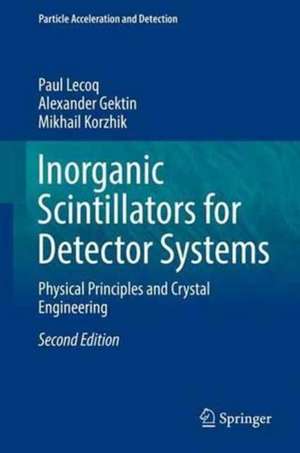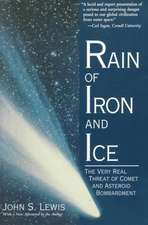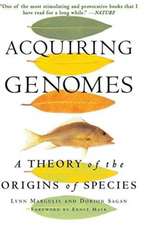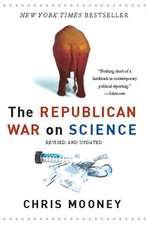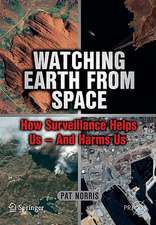Inorganic Scintillators for Detector Systems: Physical Principles and Crystal Engineering: Particle Acceleration and Detection
Autor Paul Lecoq, Alexander Gektin, Mikhail Korzhiken Limba Engleză Hardback – 28 dec 2016
Such novel materials with high light yield as well as significant advances in crystal engineering offer exciting new perspectives. Most promising is the application of scintillators for precise time tagging of events, at the level of 100 ps or higher, heralding a new era in medical applications and particle physics.
Since the discovery of the Higgs Boson with a clear signature in the lead tungstate scintillating blocks of the CMS Electromagnetic Calorimeter detector, the current trend in particle physics is toward very high luminosity colliders, in which timing performance will ultimately be essential to mitigating pile-up problems. New and extremely fast light production mechanisms based on Hot-Intraband-Luminescence as well as quantum confinement are exploited for this purpose.
Breakthroughs such as crystal engineering by means of co-doping procedures and selection of cations with small nuclear fragmentation cross-sections will also pave the way for the development of more advanced and radiation-hard materials. Similar innovations are expected in medical imaging, nuclear physics ecology, homeland security, space instrumentation and industrial applications. This second edition also reviews modern trends in our understanding and the engineering of scintillation materials. Readers will find new and updated references and information, as well as new concepts and inspirations to implement in their own research and engineering endeavors.
| Toate formatele și edițiile | Preț | Express |
|---|---|---|
| Paperback (1) | 743.52 lei 38-44 zile | |
| Springer International Publishing – 18 iul 2018 | 743.52 lei 38-44 zile | |
| Hardback (1) | 764.37 lei 38-44 zile | |
| Springer International Publishing – 28 dec 2016 | 764.37 lei 38-44 zile |
Din seria Particle Acceleration and Detection
-
 Preț: 386.09 lei
Preț: 386.09 lei -
 Preț: 301.09 lei
Preț: 301.09 lei - 18%
 Preț: 780.06 lei
Preț: 780.06 lei -
 Preț: 455.24 lei
Preț: 455.24 lei -
 Preț: 426.72 lei
Preț: 426.72 lei - 18%
 Preț: 891.33 lei
Preț: 891.33 lei - 15%
 Preț: 583.93 lei
Preț: 583.93 lei - 18%
 Preț: 1112.48 lei
Preț: 1112.48 lei - 15%
 Preț: 656.89 lei
Preț: 656.89 lei - 24%
 Preț: 749.64 lei
Preț: 749.64 lei - 24%
 Preț: 791.79 lei
Preț: 791.79 lei - 15%
 Preț: 643.34 lei
Preț: 643.34 lei -
 Preț: 390.25 lei
Preț: 390.25 lei - 15%
 Preț: 636.45 lei
Preț: 636.45 lei - 24%
 Preț: 644.84 lei
Preț: 644.84 lei - 18%
 Preț: 1230.03 lei
Preț: 1230.03 lei - 15%
 Preț: 645.96 lei
Preț: 645.96 lei - 18%
 Preț: 1405.57 lei
Preț: 1405.57 lei - 15%
 Preț: 645.79 lei
Preț: 645.79 lei -
 Preț: 150.66 lei
Preț: 150.66 lei - 15%
 Preț: 649.54 lei
Preț: 649.54 lei - 15%
 Preț: 537.29 lei
Preț: 537.29 lei - 20%
 Preț: 582.51 lei
Preț: 582.51 lei - 24%
 Preț: 743.52 lei
Preț: 743.52 lei - 24%
 Preț: 831.59 lei
Preț: 831.59 lei - 18%
 Preț: 735.51 lei
Preț: 735.51 lei - 18%
 Preț: 1007.03 lei
Preț: 1007.03 lei - 18%
 Preț: 963.91 lei
Preț: 963.91 lei - 24%
 Preț: 687.50 lei
Preț: 687.50 lei
Preț: 764.37 lei
Preț vechi: 1005.74 lei
-24% Nou
Puncte Express: 1147
Preț estimativ în valută:
146.28€ • 158.84$ • 122.87£
146.28€ • 158.84$ • 122.87£
Carte tipărită la comandă
Livrare economică 18-24 aprilie
Preluare comenzi: 021 569.72.76
Specificații
ISBN-13: 9783319455211
ISBN-10: 3319455214
Pagini: 428
Ilustrații: XVI, 408 p. 226 illus., 44 illus. in color.
Dimensiuni: 155 x 235 x 27 mm
Greutate: 0.93 kg
Ediția:2nd ed. 2017
Editura: Springer International Publishing
Colecția Springer
Seria Particle Acceleration and Detection
Locul publicării:Cham, Switzerland
ISBN-10: 3319455214
Pagini: 428
Ilustrații: XVI, 408 p. 226 illus., 44 illus. in color.
Dimensiuni: 155 x 235 x 27 mm
Greutate: 0.93 kg
Ediția:2nd ed. 2017
Editura: Springer International Publishing
Colecția Springer
Seria Particle Acceleration and Detection
Locul publicării:Cham, Switzerland
Cuprins
Preface to the Second edition.- Preface to the First Edition.- Scintillation and Inorganic Scintillators.- How User’s Requirements Influence the Development of Scintillators.- Addressing the Increased Demand for Fast Timing.- Scintillation Mechanisms in Inorganic Scintillators.- Energy Resolution and Non-proportionality of Scintillators.- Influence of the Crystal Structure Defects on Scintillation Properties.- Charged Hadron Radiation Damage of Scintillators.- Crystal Engineering.- Examples of Recent Crystal Development.- Conclusion.- Index.
Notă biografică
Paul Rene Michel Lecoq received his diploma as Engineer in Physics Instrumentation at the Ecole Polytechnique de Grenoble in 1972, under the leadership of Nobel Laureate Louis Neel. After two years of work at the Nuclear Physics laboratory of the University of Montreal, Canada, he got his PhD in Nuclear Physics in 1974. Since then he has been working at CERN in 5 major international experiments on particle physics, one of them led by Nobel Laureates Samuel Ting. His action on detector instrumentation, and particularly on heavy inorganic scintillator materials has received a strong support from Nobel Laureates Carlo Rubbia and Georges Charpak. He has been the technical coordinator of the electromagnetic calorimeter of the CMS experiment at CERN, which played an important role in the discovery of the Higgs boson. Member of a number of advisory committees and of international Societies, he is the promoter since 2002 of the CERIMED.NET initiative (European Center for Research in MedicalImaging) for networking physics and medicine in the field of medical imaging. He has been awarded an ERC advanced grant in 2013 by the European Research Council. He has been elected in 2008 member of the European Academy of Sciences and elevated in 2015 to the IEEE fellow grade.
Alexander Gektin received his diploma after graduating at the Physical faculty of Kharkov university. His PhD thesis (1981) was devoted to defects study in halide crystals. He got his DrSci degree in 1990 (Riga, Latvia) when he investigated the influence of high irradiation doses to crystals. During the last two decades he took part as a renowned scintillation material scientist to several international projects like BELLE, BaBar, PiBeta, CMS in high energy physics, GLAST and AGILLE in astrophysics. At the same time he has led several developments for medical imaging (large area SPECT scintillator) and security systems (600 mm long position sensitive detectors).The major part of these technology developments was transferred to different industrial production lines. At the same time he is known as an expert in the study of fundamental processes of energy absorption, relaxation and light emission in scintillation materials. He has authored more then 250 publications. He is also an Associated Editor of IEEE Transaction of Nuclear Sciences.
Mikhail Korzhik (Korjik) received his diploma in Physics at the Belarus State University in 1981. He got his PhD in 1991 and Doctoral Diploma in 2005 in Nuclear Physics and Optics. Since the beginning of nineties he was deeply involved in research and development of inorganic scintillation materials. He was instrumental in the development of the YAlO3:Ce technology for low energy gamma-rays detection. An important achievement has been the discovery of Pr3+ doped scintillation media and GdAlO3:Ce and LuAlO3:Ce scintillation materials. His study promoted the understanding of scintillation mechanismin many crystals. He took part in the discovery and mass production technology development of the lead tungstate PbWO4 scintillation crystal for high energy physics application, which resulted in the use of this crystal in two ambitious experiments at LHC, CMS and ALICE and an important contribution to the discovery of the Higgs boson. He is member of the Scientific Advisory Committee of the SCINT cycle of International Conferences dedicated to scintillation materials development.
Alexander Gektin received his diploma after graduating at the Physical faculty of Kharkov university. His PhD thesis (1981) was devoted to defects study in halide crystals. He got his DrSci degree in 1990 (Riga, Latvia) when he investigated the influence of high irradiation doses to crystals. During the last two decades he took part as a renowned scintillation material scientist to several international projects like BELLE, BaBar, PiBeta, CMS in high energy physics, GLAST and AGILLE in astrophysics. At the same time he has led several developments for medical imaging (large area SPECT scintillator) and security systems (600 mm long position sensitive detectors).The major part of these technology developments was transferred to different industrial production lines. At the same time he is known as an expert in the study of fundamental processes of energy absorption, relaxation and light emission in scintillation materials. He has authored more then 250 publications. He is also an Associated Editor of IEEE Transaction of Nuclear Sciences.
Mikhail Korzhik (Korjik) received his diploma in Physics at the Belarus State University in 1981. He got his PhD in 1991 and Doctoral Diploma in 2005 in Nuclear Physics and Optics. Since the beginning of nineties he was deeply involved in research and development of inorganic scintillation materials. He was instrumental in the development of the YAlO3:Ce technology for low energy gamma-rays detection. An important achievement has been the discovery of Pr3+ doped scintillation media and GdAlO3:Ce and LuAlO3:Ce scintillation materials. His study promoted the understanding of scintillation mechanismin many crystals. He took part in the discovery and mass production technology development of the lead tungstate PbWO4 scintillation crystal for high energy physics application, which resulted in the use of this crystal in two ambitious experiments at LHC, CMS and ALICE and an important contribution to the discovery of the Higgs boson. He is member of the Scientific Advisory Committee of the SCINT cycle of International Conferences dedicated to scintillation materials development.
Textul de pe ultima copertă
This second edition features new chapters highlighting advances in our understanding of the behavior and properties of scintillators, and the discovery of new families of materials with light yield and excellent energy resolution very close to the theoretical limit. The book focuses on the discovery of next-generation scintillation materials and on a deeper understanding of fundamental processes.
Such novel materials with high light yield as well as significant advances in crystal engineering offer exciting new perspectives. Most promising is the application of scintillators for precise time tagging of events, at the level of 100 ps or higher, heralding a new era in medical applications and particle physics.
Since the discovery of the Higgs Boson with a clear signature in the lead tungstate scintillating blocks of the CMS Electromagnetic Calorimeter detector, the current trend in particle physics is toward very high luminosity colliders, in which timing performance will ultimately be essential to mitigating pile-up problems. New and extremely fast light production mechanisms based on Hot-Intraband-Luminescence as well as quantum confinement are exploited for this purpose.
Breakthroughs such as crystal engineering by means of co-doping procedures and selection of cations with small nuclear fragmentation cross-sections will also pave the way for the development of more advanced and radiation-hard materials. Similar innovations are expected in medical imaging, nuclear physics ecology, homeland security, space instrumentation and industrial applications. This second edition also reviews modern trends in our understanding and the engineering of scintillation materials. Readers will find new and updated references and information, as well as new concepts and inspirations to implement in their own research and engineering endeavors.
Such novel materials with high light yield as well as significant advances in crystal engineering offer exciting new perspectives. Most promising is the application of scintillators for precise time tagging of events, at the level of 100 ps or higher, heralding a new era in medical applications and particle physics.
Since the discovery of the Higgs Boson with a clear signature in the lead tungstate scintillating blocks of the CMS Electromagnetic Calorimeter detector, the current trend in particle physics is toward very high luminosity colliders, in which timing performance will ultimately be essential to mitigating pile-up problems. New and extremely fast light production mechanisms based on Hot-Intraband-Luminescence as well as quantum confinement are exploited for this purpose.
Breakthroughs such as crystal engineering by means of co-doping procedures and selection of cations with small nuclear fragmentation cross-sections will also pave the way for the development of more advanced and radiation-hard materials. Similar innovations are expected in medical imaging, nuclear physics ecology, homeland security, space instrumentation and industrial applications. This second edition also reviews modern trends in our understanding and the engineering of scintillation materials. Readers will find new and updated references and information, as well as new concepts and inspirations to implement in their own research and engineering endeavors.
Caracteristici
Provides a practical guide for building scintillator-based detectors Presents updated information on basic processes including the simulation of energy deposition mechanisms Describes the considerable advances in both traditional and novel engineering and production of scintillation materials, including MPD (Micro-Pulling-Down), ceramics, and nanocrystals Includes supplementary material: sn.pub/extras
